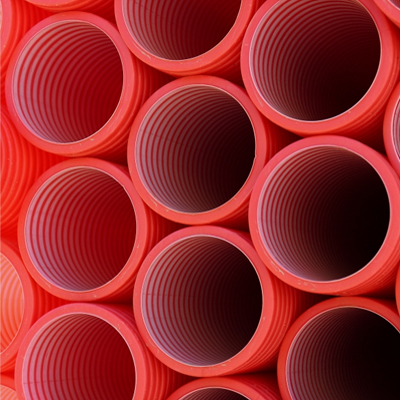Flame Retardants Plastics: Then and Now

Flame retardants are a class of chemicals designed to provide passive fire protection to polymers under specific fire risk scenarios. The fire protection provided by the flame retardant can vary from ignition resistance to slowing of flame spread/heat release growth to smoke and toxic gas reduction. Flame retardants can be used to perform wide range of safety measures if chosen and implemented properly. It is important to remember that every flame retardant solution must be customized for a specific polymer and for a specific test. In other words, Flame retardants are chemicals used in thermoplastics, thermo sets, textiles and coatings to prevent or resist the spread of fire.
Flame retardants are examples of polymer additives, which are added to plastic at some point during its manufacture, to bring a specific advantage to a plastic (such as improved mechanical, thermal or electrical properties, color, and oxygen or UV protection) which the base polymer could not provide on its own. One important thing to understand is that there is no such thing as a universal flame retardant because a material that works well with a polymer in one specific test may not be appropriate for the same polymer in another test, or for a different polymer in that same test. Every flame retardant application must be tailored for a specific polymer in a specific test. Development of new flame retardant applications requires proper study and careful attention to polymer chemistry, polymer thermal decomposition behavior, and the flame retardant mechanism.
In 2009 the global market for flame-retardant chemicals was more than 3 billion pounds, with a value of over $4 billion. This was expected to reach $6.1 billion by 2014. Important applications include aerospace, automotive, electronics & electrical goods, carpeting, textiles, mass transport (train, ships, and subways), building & construction, military, and wire & cable.
The most common flame retardants are the brominated flame retardants, which are so commonly used due to their great efficacy in a wide range of polymers and applications and their low cost. These materials have been known since the 1930s, and have proved to be effective. But the use of some flame retardants have raised environmental and health related concerns because of which they have to be withdrawn. For instance, polychlorinated biphenyls (PCBs) were banned in 1977 when it was discovered that they are toxic. The EU has banned several types of polybrominated diphenyl ethers (PBDEs) as of 2008; 10 years after Sweden discovered that they were accumulating in breast milk.
As far as environmental issues are concerned there were two significant environmental events which have captured the public’s attention and led to a general repulsion for chemicals in the Western World. These include the Great Smog of London (United Kingdom, 1952), which caused numerous deaths due to emissions and the Cuyahoga River fire (near Cleveland, Ohio, USA, 1969) where the water ‘caught fire’ due to incorrect chemical disposal. In 2006 Pentabromodiphenyl ether and Octabromodiphenyl ether were voluntarily withdrawn by the last major manufacturer of these chemicals (Great Lakes Chemical Corporation, now part of Chemtura) and regulated heavily in the US by the Environmental Protection Agency (EPA), thus ensuring that there would be no new major use of these chemicals.
Apart from this in May, 2012, a very informative article was published by the Chicago Tribune calling for a ban on an entire chemical class of flame retardants. The Chicago Tribune mentioned in the article that toxic chemicals that are used in plastic products are linked to serious health problems, including cancer, developmental problems, neurological deficits and impaired fertility.
Keeping in mind the above mentioned drawbacks of flame retardants one of the major change has occurred in the past year; flame retardants that have been in use for decades (such as brominated diphenyl ethers and hexabromocyclododecane (HBCD) will no longer be allowed after the end of 2013 or 2014. Even with some national regulatory exceptions, the extended use time for these flame retardants is unlikely exceed one or two years.
As a result of all these concerning issues the manufacturers of flame retardants thought of coming out with some different flame retardants which are harmless to the environment and does not raise health concerns.
What’s new in Flame Retardants?
With the ban on the brominated flame retardants many companies have come up with new replacements. In many cases, the replacement is a polymeric brominated polymer. This is because polymeric materials tend to have a much lower environmental impact (low bio-accumulation and toxicity factors) than small molecules do. The use of polymeric flame retardants is one that is likely to continue as the flame retardant manufacturers advance this technology. Indeed, polymeric flame retardants have some superior advantages from a manufacturing perspective, compared to the flame retardants they are replacing. Specifically, they will likely be easier to melt-compound into a plastic, and may give better balance of properties in final plastic products as the final product will be a polymer/polymer blend, not a polymer with fillers/additives present. These polymeric additives, with trade names such as GreenArmor (Albemarle), Emerald Innovation (Great Lakes), and FR122 (Israel Chemicals), are a new trend for 2012 and one that is likely to continue.
New Commercial Non-Halogenated Flame Retardants
The first new group of non-halogenated flame retardants is polymeric/oligomeric phosphonate compounds made by a company known as FRX Polymers. FRX Polymers has a range of polymeric additives and reactive oligomers, all of which can be melted, compounded with other polymers, or can be used directly as inherently flame retardant materials. Applications in fibers, electronics, transportation (aerospace, trains), building and construction have been claimed. The polymers which appear to be most effective are those containing oxygen in the polymer backbone, including polycarbonate, polyesters [unsaturated, poly (ethylene terephthalate), poly (butylene terephthalate)], thermoplastic polyurethanes, and epoxies.
Another company Israel Chemicals Limited has recently released Fyrol HF-5, another polymeric non-halogenated flame retardant. It contains a high level of phosphorus, which suggested that it could be effective in flexible polyurethane foams used in automotive, mattress, and furniture applications.
Protective Coating - New Flame Retardant Approaches
Another way to achieve flame retardant protection in thermoplastic materials is through the use of protective coatings. There are two notable approaches relevant to thermoplastics. The first is the use of an infrared reflective coating on a thermoplastic so that the material never heats up enough to thermally decompose and ignite.
Another protective coating approach is provided by the use of layer-by-layer (LbL) coatings. These have been used successfully for textiles and foams.
Flame Retardants for Additive Manufacturing of Plastics
In the past year, a brand new technology has opened up new markets, novel applications, and the potential to bring plastic goods manufacture to a much wider range of companies. The technology causing this explosive change is known as additive manufacturing or 3D printing. Additive manufacturing has the potential to make plastic custom-made parts, designs, and shapes readily available, quite similar in many ways to how the printing press made the written word much more available.
The question is how Flame Retardants does come in the picture?
The answer can be found by examining the application of the printed parts. More specifically by examining the use of the printed parts and any fire risk associated with those applications.
If you are just printing a toy or a neat shape that will be used as a model, then any plastic compatible with the 3D printing process is acceptable. But if you’re making a custom case for an electronic application or a custom part then there may have a fire risk associated with it. If there is a chance of an electrical short circuit near a plastic part, flame retardancy may be required, and this need may not be met with common thermoplastics used for 3D printing (typically HIPS or ABS).
In addition to all these developments in the field of flame retardants various conferences are being held at the international level where experts from this field come together to discuss the manufacture of such flame retardants which is not a threat to the environment as well as to the health of living beings. All of us agree that flame retardants are necessary because they can prevent the fire but the manufacturers of flame retardants should try and come up with such formulas which does not compromise with the health of all living beings as well as ensures environmental safety.



